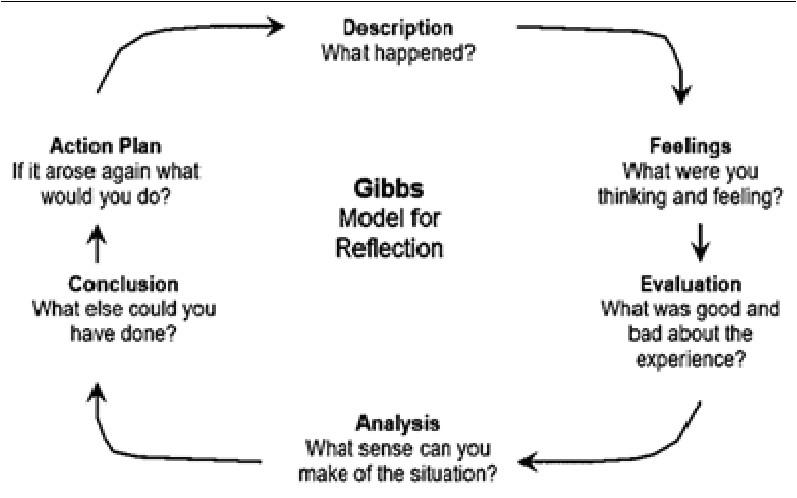gibbs model of reflection

In the fast-paced world we live in, self-reflection is often overlooked, yet it is a crucial aspect of personal and professional growth. One widely recognized tool for introspection is the Gibbs Model of Reflection. In this article, we'll delve into the intricacies of this powerful model, exploring its stages and how it can be a transformative guide for individuals in various fields.
Understanding the Gibbs Model
The Gibbs Model of Reflection is a structured approach to thinking critically about experiences, allowing individuals to gain deeper insights and learn from them. Developed by Graham Gibbs, this model comprises six distinct stages, providing a systematic framework for reflection.
Description
At the outset, reflection involves describing the event or experience in detail. This serves as the foundation for the entire process, prompting individuals to recall the situation, including thoughts, feelings, and actions involved.
Feelings
The second stage encourages a focus on personal emotions and thoughts during the experience. Delving into one's emotional responses provides a valuable perspective on how different situations impact an individual on a visceral level.
Evaluation
Critically evaluating the experience comes next. This stage involves analyzing both positive and negative aspects of the situation, examining what worked well and what could have been improved.
Analysis
Moving beyond evaluation, the analysis stage encourages a deeper exploration of the experience. This involves considering the broader context, identifying patterns, and discerning the underlying factors that contributed to the outcome.
- Questions and Answers
- Opinion
- Motivational and Inspiring Story
- Technology
- True & Inspiring Quotes
- Live and Let live
- Focus
- Art
- Causes
- Crafts
- Dance
- Drinks
- Film/Movie
- Fitness
- Food
- Jocuri
- Gardening
- Health
- Home
- Literature
- Music
- Networking
- Alte
- Party
- Religion
- Shopping
- Sports
- Theater
- Wellness
- News
- Culture

